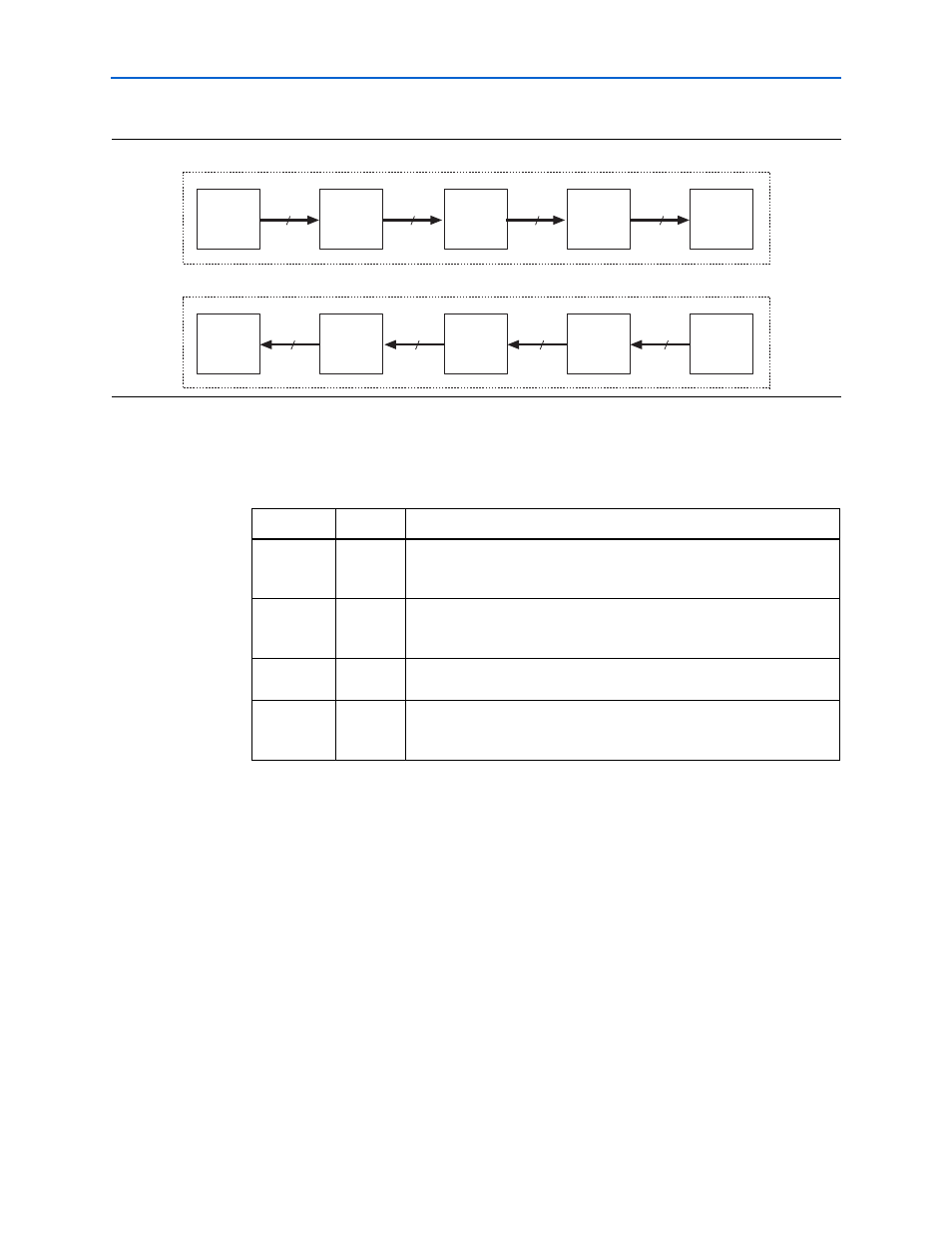Global interface, Pos-phy level 3 interface, Global interface –17 pos-phy level 3 interface –17 – Altera POS-PHY Level 2 and 3 Compiler User Manual
Page 45

Chapter 3: Functional Description
3–17
Interface Signals
© November 2009
Altera Corporation
POS-PHY Level 2 and 3 Compiler User Guide
Preliminary
Global Interface
Table 3–8
describes the global interface signals.
The ‘A’ interface and each ‘B’ interface have independent resets, which are provided
to allow you to assert the reset asynchronously to its clock domain. They are not
intended to provide individual channel resets. If one channel needs a reset, all
channels must be reset. Deasserting the resets must be done synchronously to its clock
domain.
Additionally, IP Toolbench can connect the independent resets and clocks to a
common reset and clock (see
‘A’ interface signals are prefixed by a_; ‘B’ interface signals are prefixed by b1_, b2_,
and so on.
POS-PHY Level 3 Interface
The interface direction is shown as either link to PHY, or PHY to link.
For a POS-PHY level 3 link-layer MegaCore function, the following rules apply:
Figure 3–15. Input/Output Specification
8 to 64
8 to 64
8 to 64
8 to 32
'A'
Source
Interface
Bus Width
Conversion
(wider)
8 to 64 bit
FIFO
'B'
Interface
Bus Width
Conversion
(narrower)
Source MegaCore Function
8 to 64
8 to 64
8 to 64
8 to 32
'A'
Sink
Interface
Bus Width
Conversion
(wider)
8 to 64 bit
FIFO
'B'
Interface
Bus Width
Conversion
(narrower)
Sink MegaCore Function
Table 3–8. Global Interface Description
Signal
Direction
Description
treset_n
Input
Asynchronous reset for all flip-flops on the POS-PHY source tfclk
clock domain, active low. Can be asserted asynchronously, but must be
deasserted synchronously to tfclk.
rreset_n
Input
Asynchronous reset for all flip-flops on the POS-PHY receive rfclk
clock domain, active low. Can be asserted asynchronously, but must be
deasserted synchronously to rfclk.
reset_n
Input
Asynchronous reset for the Atlantic interface, active low. Can be asserted
asynchronously, but must be deasserted synchronously to clk.
clk
Input
Clock, rising-edge active. The Atlantic interface uses single-edge
clocking. All signals are synchronous to clk, and master and slave are
in the same clock domain.
Note to
Table 3–8
:
(1) POS-PHY clock signals are described in the relevant interface tables.
